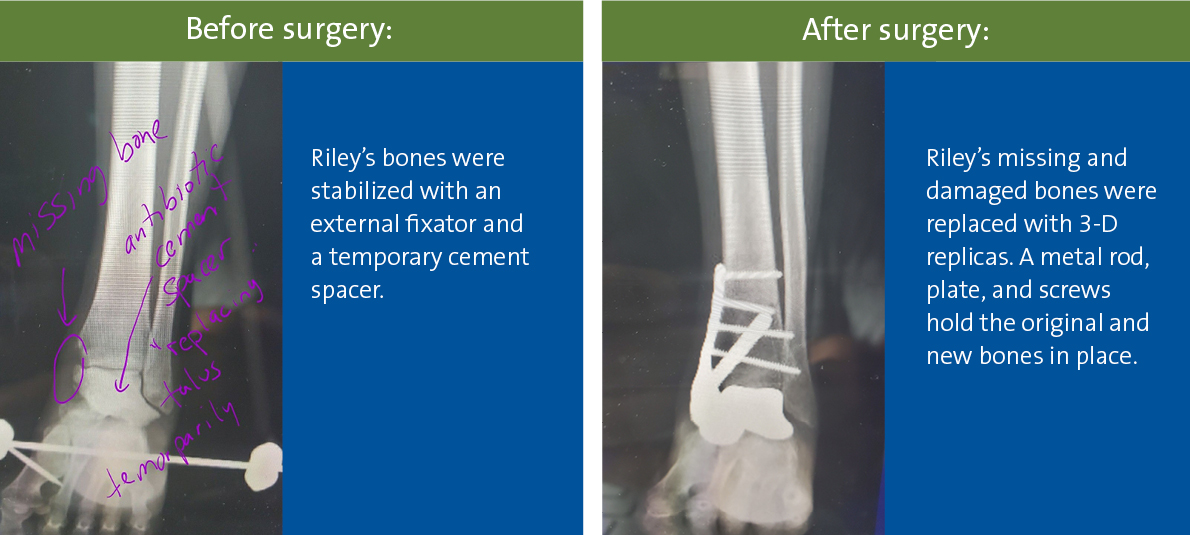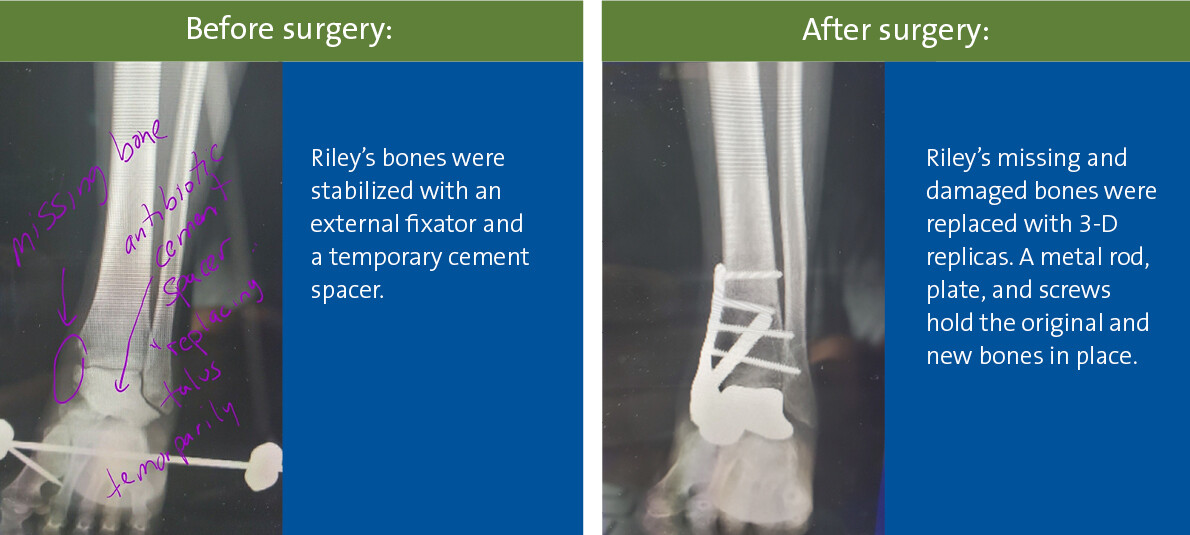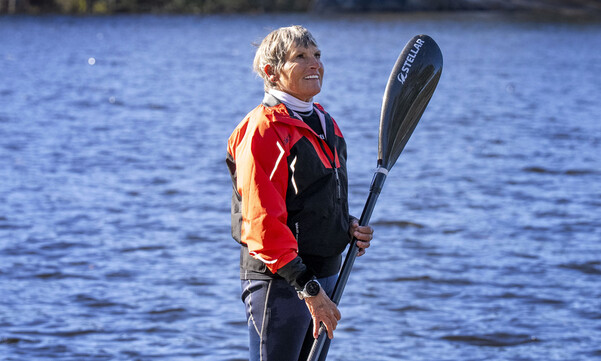What once might have seemed like science fiction is now a common procedure at Duke -- replacing damaged or diseased ankle bones with 3D printed replicas. In the not-too-distant past, for most people with severe ankle injuries involving the talus (the bone between the shin and the heel) or a failed ankle replacement affecting the talus, the only choices were amputation or fusing the shin and heel bones. As one of the early adopters and innovators of 3D talus replacement surgery, Duke Health offers a better option.
3D Technology and a Doctor’s Imagination
When 23-year-old Bryana Riley learned her lower left leg needed to be amputated following a serious car accident in her hometown of Atlanta, her family sprang into action. After scouring the internet, Riley’s mother found what she was looking for -- foot and ankle surgeons at Duke who are well-known for innovative orthopaedic surgeries using 3D printed bones.
Duke orthopaedic surgeons had performed countless 3D printed talus replacement surgeries, but Riley’s case was different. The damage to her ankle was serious -- some of the crucial supporting bones in her ankle were missing. Also, not only would the talus need replacing, but also the bone that stabilizes the ankle (the malleolus). Duke is one of the leading centers in the world for 3D talus replacement, so the novelty in this case was to replace two bones at the same time.
Because her missing bones could not be replicated, 3D replacements were designed based on mirror images of her right ankle. In Riley’s case, this was her missing talus and malleolus. The procedure could not have gone any better. The surgery was executed just as planned on the computer. It shows the power of 3D printing and how it has allowed surgeons to save limbs and restore quality of life. Today Riley is walking without a limp and getting back to the activities she enjoys.






